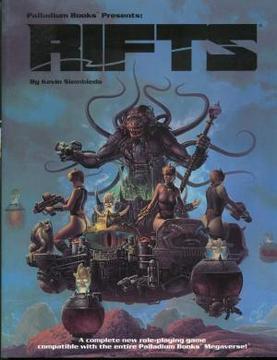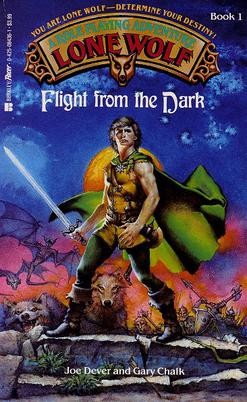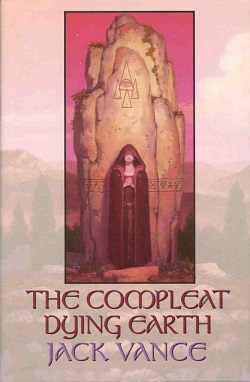This week, I wanted to discuss an important but sometimes underthought or overlooked issue for tabletop RPGs: Balancing Skills. For purposes of this post, by "Balancing Skills," I'm referring to skills being balanced in terms of power/utility compared to each other.
In addition, by "Skills," I'm broadly referring to areas of a Player Character's expertise that can have an in-game effect. This runs the gamut from swinging a sword to speaking a language to disarming a trap, etc.
In addition, by "Skills," I'm broadly referring to areas of a Player Character's expertise that can have an in-game effect. This runs the gamut from swinging a sword to speaking a language to disarming a trap, etc.
 |
| You know, like nunchuck skills, bowhunting skills, computer hacking skills... |
Every role-playing game has a skill system, whether or not it's expressly set forth in the rules set. For example, in older editions of Dungeons & Dragons, skills are mostly subsumed into other parts of the rules (e.g., THAC0, ability scores, class features, etc.) or else hand waved and house ruled. So, a PC's maximum number of languages and retainers are determined by Intelligence and Charisma, respectively. Or, since there's no negotiation skill, the DM will often simply role-play a situation or ask the PC to make a roll against their Charisma score or some other target number (e.g., 1 in 6, 2 in 6, etc.). It helps that D&D has a robust set of ability scores that, when doubled as skills, can cover many situations.
On the other hand, there are skill-based games such as GURPS, where the primary mechanic (success rolls) usually ends up as a skill check in actual play. Unsurprisingly, skills usually take an outsized importance in classless games. This is also often true in Stat + Skill systems, such as Exalted.
Problems arise when the designers to not think through their skill system. Ideally, designers should consider both 1) Breadth and 2) Usage of skills so that a the value of a particular skill is roughly balanced against the others.
In terms of "Breadth," I'm referring to how broad is a particular skill's expertise. For example, in Exalted, Melee covers proficiency in *ALL* weapons, making it an extremely broad skill.
By contrast, Call of Cthulhu divides up being sneaky into:
As a consequence, this division in CoC makes each individual skill weak and also makes it difficult to be a expert rogue.
A game's design should not only consider the general applicability of a skill, but also its Usage. In terms of Usage, I'm referring to how often a skill is used in actual play. Specific usage may vary due to genre or a group's play style, but usually some skills are used often and some skills are used rarely.
If a skill's Usage is relatively high, the designer should consider reducing it's Breadth. Additionally, a game should have enough skills of sufficient Breadth to cover foreseeable situations of reasonable Usage. So, for example, it's probably overkill for a typical fantasy game to include a skill for elephant riding.
In addition, the foregoing assumes that each skill costs the same number of skill points to purchase. It's possible to balance by varying costs, using skill specialities, skill groups, etc. However, as modern design tends toward greatly simplicity, I will stick with the assumption.
A notorious example of a game with a problematic skill system is Rifts:
There are over one hundred skills in Rifts, with gaps, overkill and redundancy. Some are very narrow and not likely to ever be used in actual play (e.g., Boat Building). Some skills should be combined (e.g., Automobile and Truck). Some skills overlap completely with another to make the other irrelevant (e.g., Concealment and Palming).
On the other hand, there's no Negotiation skill.
It doesn't help that there's no actual explanation of how to resolve non-combat skills. The skills are rated by percentage, so presumably the player must make a d100 roll, but this is never expressly stated.
On the other hand, there are skill-based games such as GURPS, where the primary mechanic (success rolls) usually ends up as a skill check in actual play. Unsurprisingly, skills usually take an outsized importance in classless games. This is also often true in Stat + Skill systems, such as Exalted.
Problems arise when the designers to not think through their skill system. Ideally, designers should consider both 1) Breadth and 2) Usage of skills so that a the value of a particular skill is roughly balanced against the others.
In terms of "Breadth," I'm referring to how broad is a particular skill's expertise. For example, in Exalted, Melee covers proficiency in *ALL* weapons, making it an extremely broad skill.
By contrast, Call of Cthulhu divides up being sneaky into:
Conceal (Allows the visual covering up, secreting, or masking of an object or objects, perhaps with debris, cloth, or other intervening or illusion-promoting materials, perhaps by making a secret panel or false compartment, or perhaps by repainting or otherwise changing an item's characteristics to escape detection.)Hide (As opposed to Conceal, Hide concerns the individual user's ability to escape detection in an unprepared position. Use this skill only in a pursuit situation, or when under surveillance or patrol.)andSneak (The art of moving quietly, without alerting those who might hear. Used in combination with Hide, the investigator makes a single D100 roll, the result of which is matched against the investigator's percentages in both skills. Use this combination when silent movement is necessary.)
As a consequence, this division in CoC makes each individual skill weak and also makes it difficult to be a expert rogue.
A game's design should not only consider the general applicability of a skill, but also its Usage. In terms of Usage, I'm referring to how often a skill is used in actual play. Specific usage may vary due to genre or a group's play style, but usually some skills are used often and some skills are used rarely.
If a skill's Usage is relatively high, the designer should consider reducing it's Breadth. Additionally, a game should have enough skills of sufficient Breadth to cover foreseeable situations of reasonable Usage. So, for example, it's probably overkill for a typical fantasy game to include a skill for elephant riding.
In addition, the foregoing assumes that each skill costs the same number of skill points to purchase. It's possible to balance by varying costs, using skill specialities, skill groups, etc. However, as modern design tends toward greatly simplicity, I will stick with the assumption.
A notorious example of a game with a problematic skill system is Rifts:
There are over one hundred skills in Rifts, with gaps, overkill and redundancy. Some are very narrow and not likely to ever be used in actual play (e.g., Boat Building). Some skills should be combined (e.g., Automobile and Truck). Some skills overlap completely with another to make the other irrelevant (e.g., Concealment and Palming).
On the other hand, there's no Negotiation skill.
It doesn't help that there's no actual explanation of how to resolve non-combat skills. The skills are rated by percentage, so presumably the player must make a d100 roll, but this is never expressly stated.

















